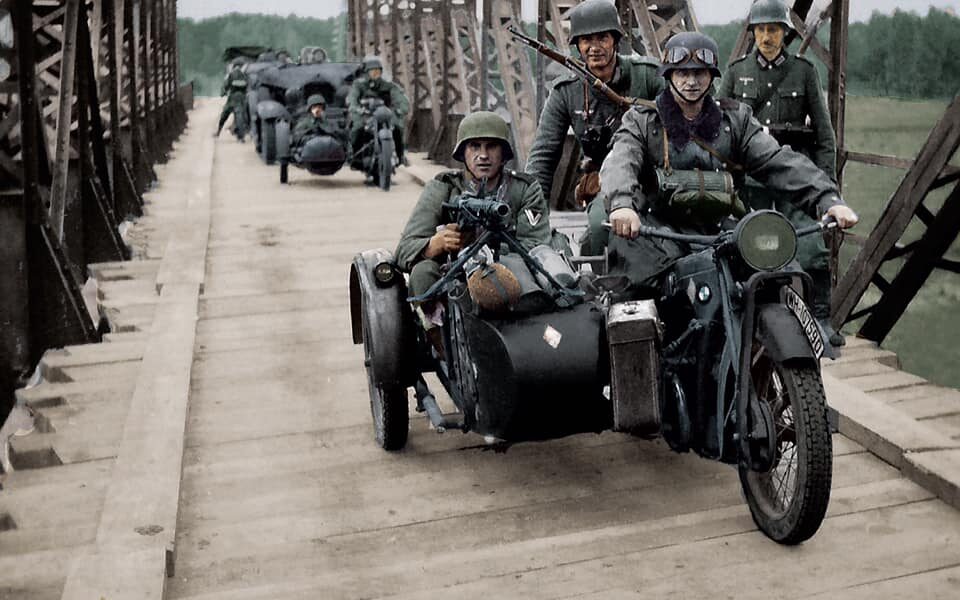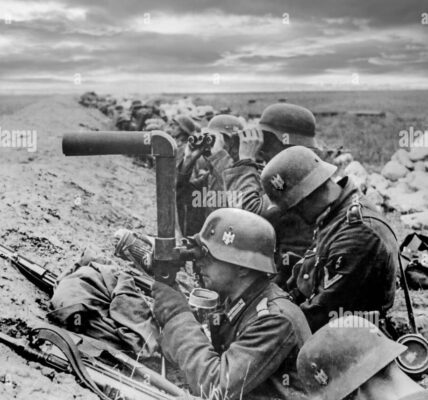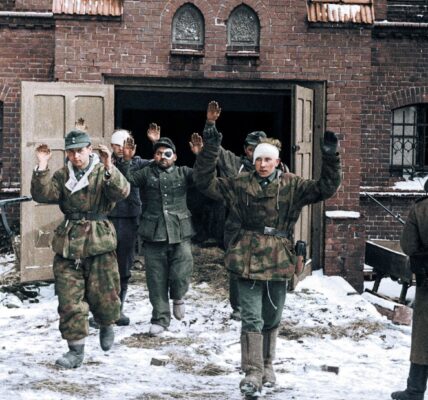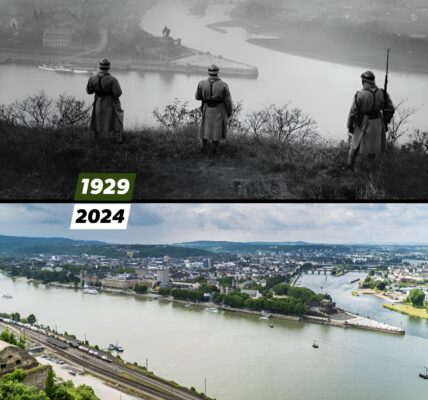The BMW R75 is a World War II-era motorcycle and sidecar combination manufactured by the German company BMW. The BMW R75 features an integrated two-wheel drive design with drive shafts to both the rear and third sidecar wheels, a limited-slip differential, and a transfer case that offers both on-road and off-road gear ratios and through which all forward and reverse gears operate. This makes the R75 extremely maneuverable and capable of handling most surfaces. Some other motorcycle manufacturers, such as FN and Norton, offered optional sidecar drive.
Story
In the 1930s, BMW produced a range of popular and highly capable motorcycles. In 1938, development of the R75 began in response to a request from the German army.
Pre-production models of the R75 were powered by a 750 cc side-valve engine based on the R71. However, it quickly became apparent that it was necessary to develop an entirely new OHV 750 cc engine for the R75 unit. This OHV engine later proved to be the basis for subsequent post-war BMW motorcycles with boxer twin engines, such as the R51/3, R67, and R68.
Both the BMW R75 and the competing Zündapp KS 750 were widely used by the Wehrmacht in Russia and North Africa. However, after a period of evaluation, it became clear that the Zündapp was the superior machine. In August 1942, at the urging of the army, Zündapp and BMW agreed to standardize parts for both machines, ultimately creating a Zündapp-BMW hybrid (designated the BW 43), in which a BMW 286/1 sidecar would be grafted onto a Zündapp KS 750 motorcycle. They also agreed to cease production of the R75 once production reached 20,200 units, and that from that point on, BMW and Zündapp would produce only the Zündapp-BMW machine, manufacturing 20,000 each year.
Since the target of 20,200 BMW R75s was not reached, production continued until the Eisenach factory was so badly damaged by Allied bombing that production had to be stopped in 1944. A further 98 units were assembled by the Soviets in 1946 as reparations.
Nevertheless, standardization achieved a 70% part commonality between BMW and Zündapp motorcycles. This simplified the supply of spare parts for these vehicles, many of which are still in the hands of historic motorcycle enthusiasts today. Due to their sophisticated and durable technology, these vehicles are still sought-after collector’s items and are correspondingly expensive. A well-restored R75 can still be used today without any problems in everyday life, both on and off-road.
In 1954, a small number of modified R75 models were produced for testing purposes in Eisenach (then in the Soviet-controlled GDR) under the designation AWO 700, but full-scale production did not continue.






Similar motorcycles in other countries
Soviet Union and China
The myth that the Soviet Union purchased five R-71s (predecessor to the R-75) through Swedish intermediaries to study and subsequently build its own version, the M-72, is propaganda. The tooling was acquired under license from BMW as part of the 1939 Molotov-Ribbentrop Pact.
A Chinese variant of the M-72, the Yangtze River 750, went into production in 1957.
United States
The wartime success and reliability of the shaft-driven R75 led the U.S. Army to request Harley-Davidson produce a similar shaft-driven motorcycle for American troops. This led to Harley producing its first shaft-driven model, the Harley-Davidson XA, which was a near-identical duplicate of the R75 without a sidecar.
 Rear of a BMW R75 motorcycle in desert camouflage with spare wheel on the back of the sidecar (Museum)
Rear of a BMW R75 motorcycle in desert camouflage with spare wheel on the back of the sidecar (Museum)
Source: Wikipedia






